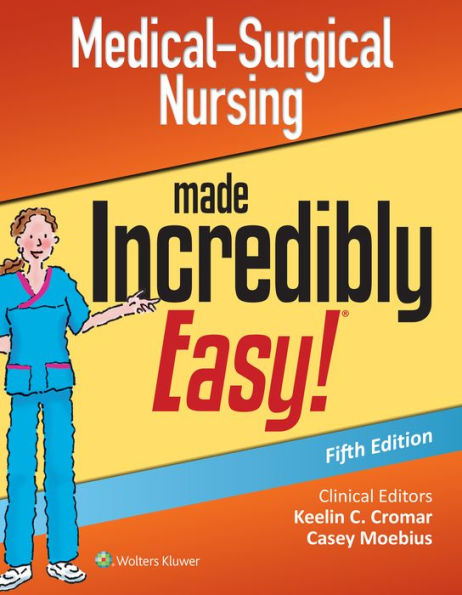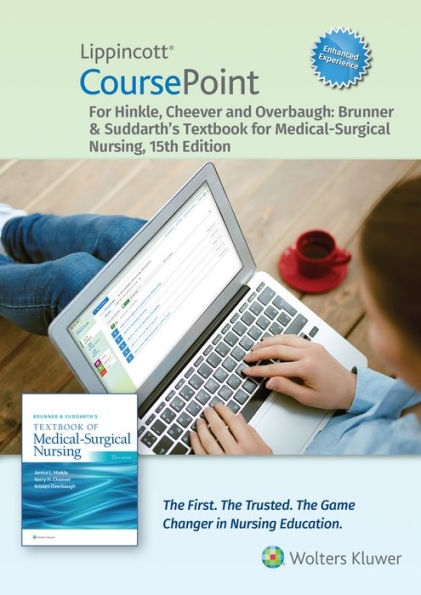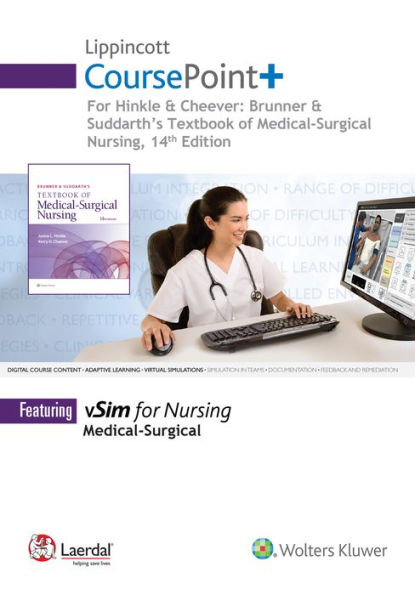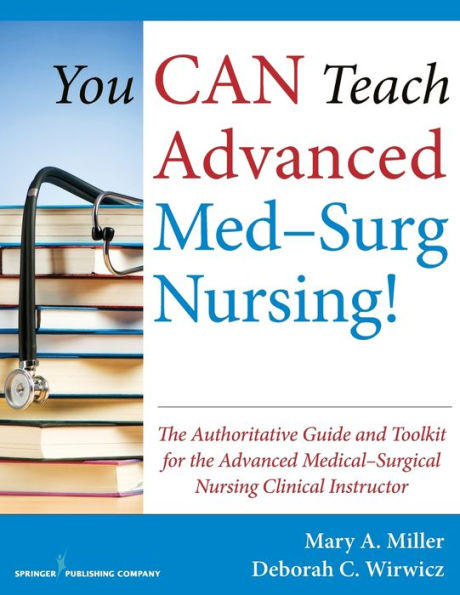Home
Lewis's Medical-Surgical Nursing - 2-Volume Set: Assessment and Management of Clinical Problems
Loading Inventory...
Barnes and Noble
Lewis's Medical-Surgical Nursing - 2-Volume Set: Assessment and Management of Clinical Problems
Current price: $188.99
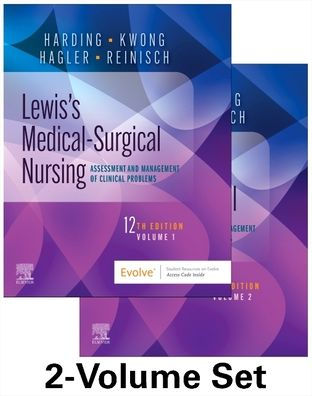

Barnes and Noble
Lewis's Medical-Surgical Nursing - 2-Volume Set: Assessment and Management of Clinical Problems
Current price: $188.99
Loading Inventory...
Size: OS
*Product Information may vary - to confirm product availability, pricing, and additional information please contact Barnes and Noble
Get a unique, conceptual approach to nursing care in this rapidly changing healthcare environment.
Lewis’s Medical-Surgical Nursing, 11
th
Edition
gives you a solid foundation in medical-surgical nursing. This thoroughly revised text includes a more conversational writing style, an increased focus on nursing concepts and clinical trends, strong evidence-based content, and an essential pathophysiology review. Content covers all aspects of nursing care including health promotion, acute intervention, and ambulatory care. Helpful boxes and tables make it easy for you to find essential information, and a building-block approach makes even the most complex concepts simple to grasp. Key topics such as interprofessional care, delegation, safety, and prioritization are integrated throughout. Additionally, extensive drug therapy information and diagnostic studies tables give you a full picture of care. Best of all — a complete collection of learning and study resources helps you learn more effectively and offers valuable, real-world preparation for clinical practice.
Content written and reviewed by leading experts in the field
ensures that information is comprehensive, current, and clinically accurate.
Interprofessional Care
tables and sections in all management chapters
emphasize the importance of total patient care in today's health care settings and outline the role of each provider in managing disorders.
Bridge to NCLEX Examination
review questions
at the end of each chapter reinforce key content while helping you to prepare for the NCLEX examination with both standard and alternate item format questions.
Check Your Practice
boxes
challenge you to think critically and interact with patient data.
Informatics in Practice
discuss how technology is used by nurses and patients in healthcare settings.
Evidence-based practice
help you understand how to apply the latest research to real-life patient care.
Safety Alerts
throughout the book
highlight patient safety issues and focus on the latest National Patient Safety Goals
.
UNIQUE!
Nursing management is presented in a consistent and comprehensive format
, addressing the unique approaches to nursing care.
Case studies
throughout text
emphasize prioritization, delegation, and concept mapping to help you learn to prioritize and delegate patient care.
Separate chapter on
Genetics
focuses on practical application to nursing care of patients.
Genetics in Clinical Practice
cover key topics such as genetic testing, Alzheimer's disease, sickle cell disease, and genetics-related ethics issues.
Genetic Risk
alerts and
Genetic Link
headings
highlight specific genetic issues related to body system assessments and disorders.
Ethical/Legal Dilemmas
promote critical thinking for timely and sensitive ethical and legal issues.
Pathophysiology Map
flow charts
make it easier for you to visualize and understand changes occurring in major diseases.
Focused Assessment
tables
reflect a realistic "assessment on the run" approach and offer brief checklists for evaluating the status of previously identified health problems and monitoring for signs of new problems.
Extensive drug therapy content
includes
Drug Therapy tables
and concise
Drug Alerts
highlighting important safety considerations for key drugs.
Promoting Population Health
summarize government health care goals as they relate to specific disorders and identify important strategies for the prevention and early detection of diseases.
Nutritional Therapy
summarize nutritional interventions and strategies for promoting healthy lifestyles in patients with various conditions.
Promoting Health Equity
and a dedicated chapter on health disparities and culturally competent care highlight risk factors and important issues related to the nursing care of various ethnic groups.
Complementary and Alternative Therapies
summarize what you need to know about the clinical uses, effects, and nursing implications of herbal remedies and complementary and alternative treatment options.
Nursing interventions and nursing diagnoses
are listed in order of priority.
Nursing Management boxes
highlight the nurse’s role in working with members of the interprofessional team and also cover specific topics and skills related to delegation.
Assessment Abnormalities
alert the nurse to frequently encountered abnormalities and their possible etiologies.
Core clinical content
focuses on highlighting and incorporating
QSEN competencies
Emergency Management
outline the treatment of health problems most likely to create medical emergencies.
Learning Outcomes
and
Key Terms
help you identify the key content for that chapter.
Health History
present key questions to ask patients related to a specific disease or disorder.
Patient and Caregiver
teaching tables
provide critical information to help you educate others who will be helping to care for the patient.
Gerontology and chronic illness
included throughout the text under Gerontologic Considerations headings and in
Gerontologic Assessment
tables.
Nursing Assessment
summarize the key subjective and objective data related to common diseases.
Gender Differences
discuss how women and men are affected differently by conditions such as pain and hypertension.
Diagnostic Studies
provide details of commonly used lab tests that help assess various body systems.
Over 60 nursing care plans
clearly shows the linkages among NIC, NOC, and nursing diagnoses, and applies them to nursing practice.
Over 800 full-color illustrations and photographs
clearly demonstrate disease processes and related anatomy and physiology.
NEW! Conversational, reader-friendly writing style
makes it easier to understand nursing concepts.
NEW use of nursing diagnosis language
(ICNP)
smoothes your transition into practice, as the International Classification for Nursing Practice is a common language shared with many electronic health record documentation systems.
NEW! Increased focus on concepts throughout the text
includes a new
Concepts Table of Contents
that lists the most common exemplars with page number references, a new
Problems Related to Comfort and
Coping section, and the most relevant concepts listed at the start of each chapter.
NEW! Additional
body map
images
are
added
throughout text.
Lewis’s Medical-Surgical Nursing, 11
th
Edition
gives you a solid foundation in medical-surgical nursing. This thoroughly revised text includes a more conversational writing style, an increased focus on nursing concepts and clinical trends, strong evidence-based content, and an essential pathophysiology review. Content covers all aspects of nursing care including health promotion, acute intervention, and ambulatory care. Helpful boxes and tables make it easy for you to find essential information, and a building-block approach makes even the most complex concepts simple to grasp. Key topics such as interprofessional care, delegation, safety, and prioritization are integrated throughout. Additionally, extensive drug therapy information and diagnostic studies tables give you a full picture of care. Best of all — a complete collection of learning and study resources helps you learn more effectively and offers valuable, real-world preparation for clinical practice.
Content written and reviewed by leading experts in the field
ensures that information is comprehensive, current, and clinically accurate.
Interprofessional Care
tables and sections in all management chapters
emphasize the importance of total patient care in today's health care settings and outline the role of each provider in managing disorders.
Bridge to NCLEX Examination
review questions
at the end of each chapter reinforce key content while helping you to prepare for the NCLEX examination with both standard and alternate item format questions.
Check Your Practice
boxes
challenge you to think critically and interact with patient data.
Informatics in Practice
discuss how technology is used by nurses and patients in healthcare settings.
Evidence-based practice
help you understand how to apply the latest research to real-life patient care.
Safety Alerts
throughout the book
highlight patient safety issues and focus on the latest National Patient Safety Goals
.
UNIQUE!
Nursing management is presented in a consistent and comprehensive format
, addressing the unique approaches to nursing care.
Case studies
throughout text
emphasize prioritization, delegation, and concept mapping to help you learn to prioritize and delegate patient care.
Separate chapter on
Genetics
focuses on practical application to nursing care of patients.
Genetics in Clinical Practice
cover key topics such as genetic testing, Alzheimer's disease, sickle cell disease, and genetics-related ethics issues.
Genetic Risk
alerts and
Genetic Link
headings
highlight specific genetic issues related to body system assessments and disorders.
Ethical/Legal Dilemmas
promote critical thinking for timely and sensitive ethical and legal issues.
Pathophysiology Map
flow charts
make it easier for you to visualize and understand changes occurring in major diseases.
Focused Assessment
tables
reflect a realistic "assessment on the run" approach and offer brief checklists for evaluating the status of previously identified health problems and monitoring for signs of new problems.
Extensive drug therapy content
includes
Drug Therapy tables
and concise
Drug Alerts
highlighting important safety considerations for key drugs.
Promoting Population Health
summarize government health care goals as they relate to specific disorders and identify important strategies for the prevention and early detection of diseases.
Nutritional Therapy
summarize nutritional interventions and strategies for promoting healthy lifestyles in patients with various conditions.
Promoting Health Equity
and a dedicated chapter on health disparities and culturally competent care highlight risk factors and important issues related to the nursing care of various ethnic groups.
Complementary and Alternative Therapies
summarize what you need to know about the clinical uses, effects, and nursing implications of herbal remedies and complementary and alternative treatment options.
Nursing interventions and nursing diagnoses
are listed in order of priority.
Nursing Management boxes
highlight the nurse’s role in working with members of the interprofessional team and also cover specific topics and skills related to delegation.
Assessment Abnormalities
alert the nurse to frequently encountered abnormalities and their possible etiologies.
Core clinical content
focuses on highlighting and incorporating
QSEN competencies
Emergency Management
outline the treatment of health problems most likely to create medical emergencies.
Learning Outcomes
and
Key Terms
help you identify the key content for that chapter.
Health History
present key questions to ask patients related to a specific disease or disorder.
Patient and Caregiver
teaching tables
provide critical information to help you educate others who will be helping to care for the patient.
Gerontology and chronic illness
included throughout the text under Gerontologic Considerations headings and in
Gerontologic Assessment
tables.
Nursing Assessment
summarize the key subjective and objective data related to common diseases.
Gender Differences
discuss how women and men are affected differently by conditions such as pain and hypertension.
Diagnostic Studies
provide details of commonly used lab tests that help assess various body systems.
Over 60 nursing care plans
clearly shows the linkages among NIC, NOC, and nursing diagnoses, and applies them to nursing practice.
Over 800 full-color illustrations and photographs
clearly demonstrate disease processes and related anatomy and physiology.
NEW! Conversational, reader-friendly writing style
makes it easier to understand nursing concepts.
NEW use of nursing diagnosis language
(ICNP)
smoothes your transition into practice, as the International Classification for Nursing Practice is a common language shared with many electronic health record documentation systems.
NEW! Increased focus on concepts throughout the text
includes a new
Concepts Table of Contents
that lists the most common exemplars with page number references, a new
Problems Related to Comfort and
Coping section, and the most relevant concepts listed at the start of each chapter.
NEW! Additional
body map
images
are
added
throughout text.


